All photos are courtesy of the author, unless otherwise attributed.
Throughout its long and complicated history, Iran has been home to a wide range of nations, ethnicities, and adherents of various religions, at times living in harmony and at other times, cohabiting in tension. When recounting the story of Iran, the nationalist currents have historically centered certain religio-ethnic narratives of true Iranian-ness, pushing out of collective memory the stories of more marginalized inhabitants and alternatively incorporating or excluding new immigrants from the constructed ideal of the nation. One of the oldest of these communities has been Iran’s Zoroastrian population, estimated at about 25,279 according to official census results in 2012. Before the introduction of Islam to Iran in the 7th century, Zoroastrians constituted approximately 70-80% of Iran’s population, but over time many either converted to Islam or left for nearby India and became members of the Parsi community, the cultural traditions of which survive to this day.
Despite the declined population, Zoroastrian structures and symbols dot Iran’s landscape and have become an important part of cultural and national identity for most Iranians and a fascinating window into Iran’s pre-Islamic history for academics and tourists alike.

In contemporary Iran, remnants of Zoroastrianism, including temples, royal monuments, and even religious symbols such as the Faravahar (symbol of union with Ahura Mazda, the Zoroastrian God) have become important sites of identification of a “true” Persian past for many Iranians both within Iran and in the Diaspora. For example, many Iranians – regardless of their religious affiliation – don shirts, necklaces or wristbands with the Faravahar symbol as a sign of displaying their ties to their cultural background, largely devoid of any religious import. Sometimes this performance of identity not only exoticizes and fetishizes Zoroastrianism, but also eliminates any association with Iran’s post-Islamic traditions.
Furthermore, this glorification of Iran’s pre-Islamic past and the focus on these holy sites and symbols have often worked to obscure the myriad ways in which Islamic relics, traditions, and stories are so intimately intertwined with their Zoroastrian predecessors, creating a unique Iranian modernity. One is often confronted with two seemingly contradictory narratives of Iranian authenticity: one with roots in Persian Zoroastrianism and the other in Arab Islam. This false binary erases sites of cultural and historical convergence such as popular religious narratives, which are often shrouded in myth and uncertainty. One of the most famous figures that occupies this site of convergence is Shahrbanu – the matriarch of Iranian Islam – and the similarity of her story to that of the emergence of Chak Chak, a Zoroastrian holy shrine.
One of the most important Zoroastrian shrines in Iran, Chak Chak (sometimes pronounced Chek Chek or Chak Chakou in local dialects) is located in Yazd Province in the center of Iran.
Also referred to as Pir-e Sabz (“the Green Pir”), it is one of the most important religious and historical sites for Zoroastrians. The complex is nestled comfortably inside tall mountains, approximately 54 km east of the famous historical city of Meybod. Today, the majority of Zoroastrians in Iran live in Yazd, Kerman, and around Tehran, in addition to smaller communities in Shiraz and Isfahan.

Many people mistakenly refer to Chak Chak as a Fire Temple (atashkadeh), the place of worship for Zoroastrians. It is, however, a holy shrine (ziaratgah) meant for pilgrimage. For the most part, Chak Chak is open to tourists year-round. The only time that it is reserved exclusively for Zoroastrians is during a four-day stretch in June every year when Zoroastrians from all over Iran and the world gather for mass worship, religious ceremonies, community building, and celebration, including playing music and singing traditional songs.
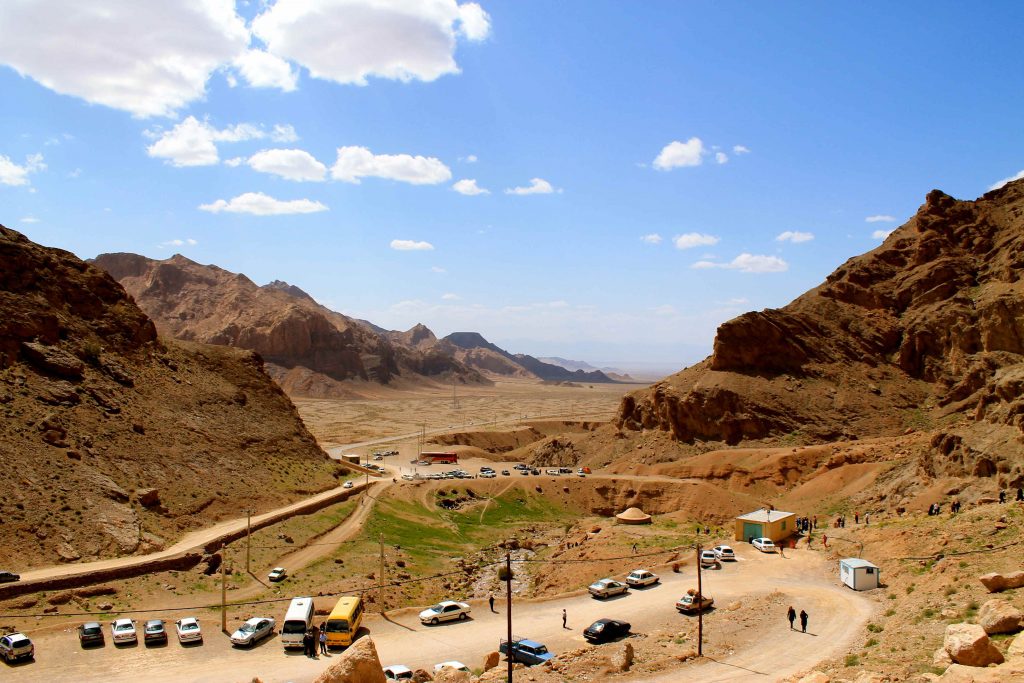


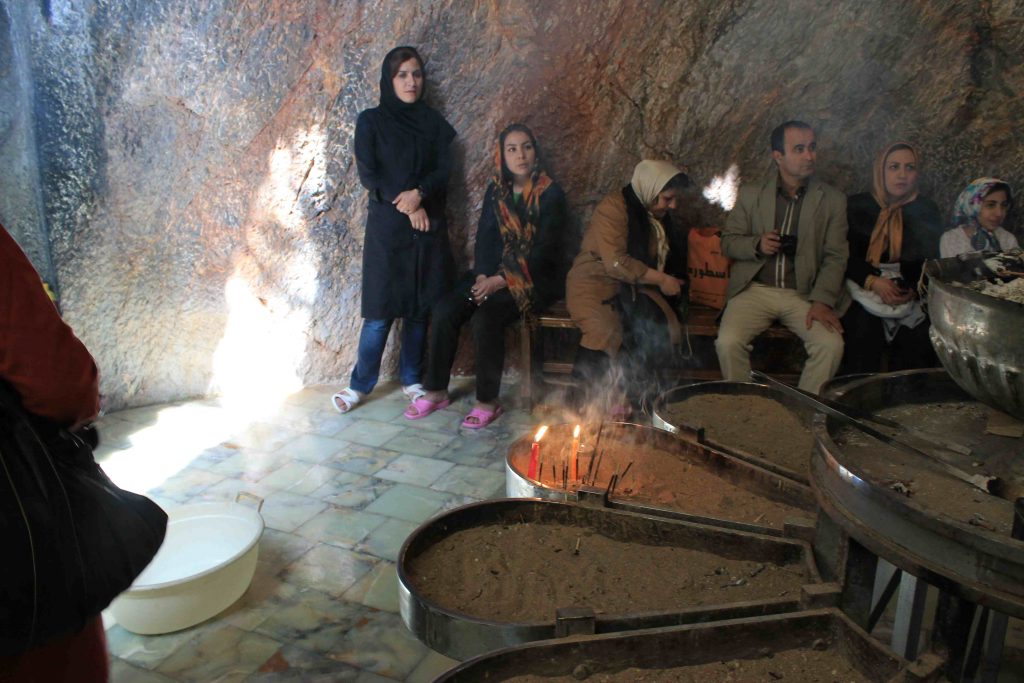

There are multiple theories regarding the emergence of Chak Chak as a holy site. However, the one cited most often is the poignant story of Hayatbanu, the third and youngest daughter of Yazdgerd III, the last Shah of the Sassanid Empire (224 CE – 651 CE) before the Arab invasion of Iran. The story goes as follows: upon the advance of Arab soldiers into the Iranian heartland, Yazdgerd sent Hayatbanu (also referred to as Nikbanu or Banu-Pars in some sources) on horseback to evade capture. As the soldiers were gaining on her at the foot of a mountain, Hayatbanu prayed for protection and the mountain opened up and devoured her in a crevice sheltering her from her would-be capturers. Unable to return, Hayatbanu remained in the cave and dedicated her life to worship and prayer. It is said that a tree grew from the place that she rested her walking staff, and that a constant slow drip of water flowed from the mountain that has not stopped ever since. Indeed, the name Chak Chak (literally: “Drip Drip”) refers to the sound of constant water drops descending into the cave inside the mountain, which symbolize Hayatbanu’s tears upon the loss of her family and home, but have also come to symbolize, over time, the tears of the oppressed and the poor.
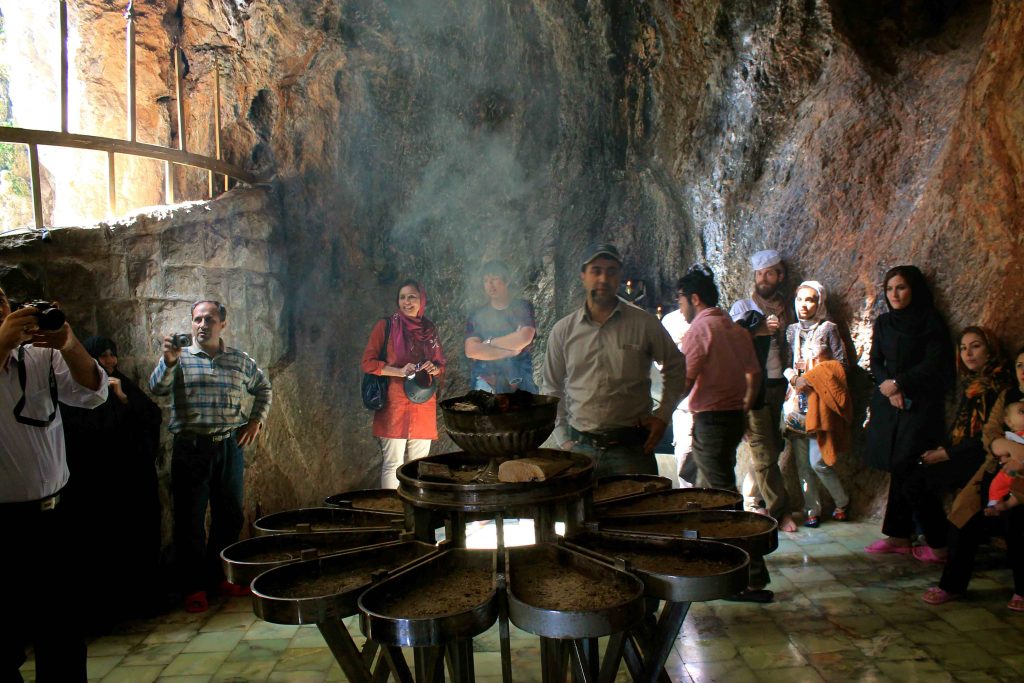
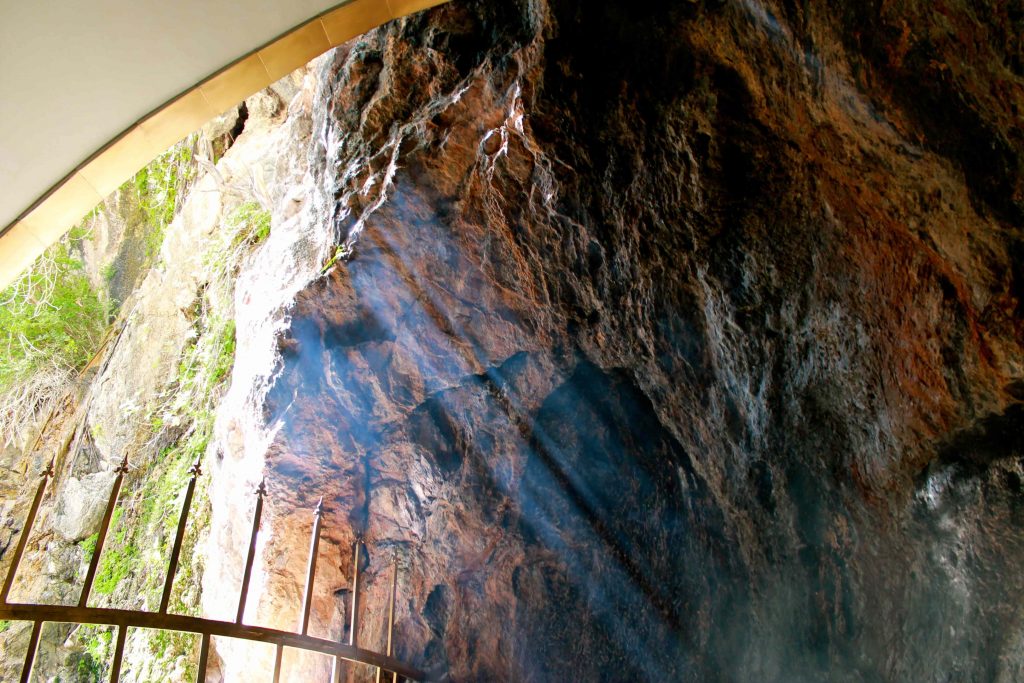
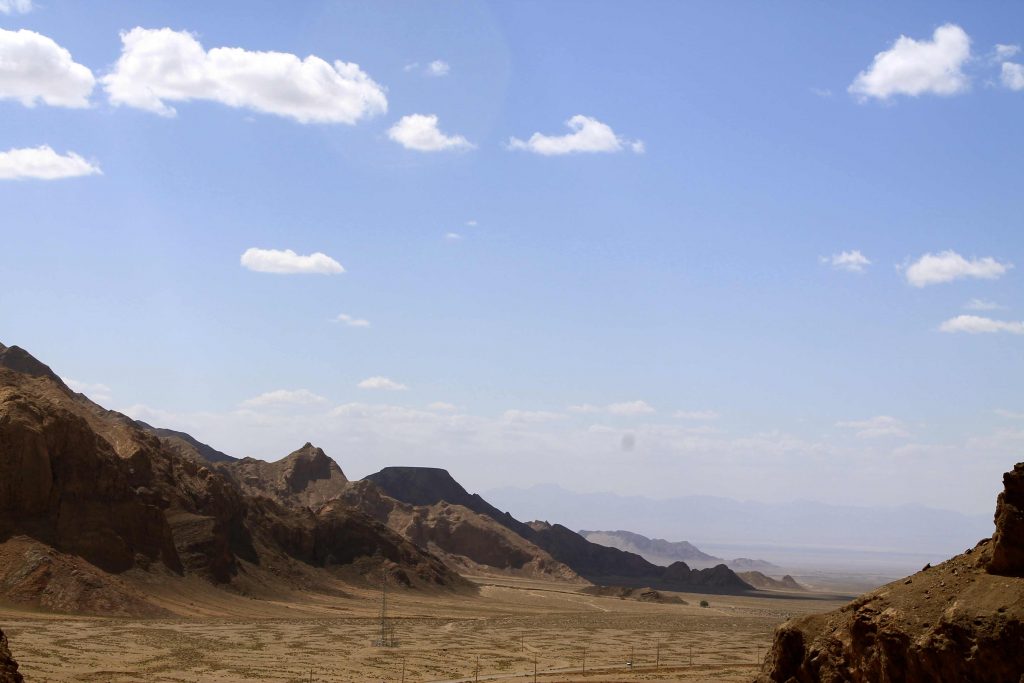
A fascinating aspect of Hayatbanu’s story is its uncanny similarity to the story of another celebrated figure in Iranian collective memory: Shahrbanu, the mother of Iranian Shi’ism.
Like the story of Hayatbanu and Chak Chak, there are multiple theories as to the identity of Shahrbanu and her place in Iranian national history. In the Twelver Shi’a tradition (but also in the belief of some Sunnis), Shahrbanu is identified as one of the wives of the Third Imam, Hussein ibn Ali, and the mother of the Fourth Imam, thus inserting an Iranian heritage to the progeny of the line of Shi’a Imams. The figure of Shahrbanu is therefore utilized in nationalist-religious discourse in modern Iran to emphasize the Iranian nature of Shi’ism and the indigenization of Islam as an intrinsically Persian religion. Often referred to as Shah-e zanan (“the King of Women”), Shahrbanu is remembered by Iranian Shi’as most tellingly in ta’ziyeh passion plays during Ashura (day of mourning commemorating Imam Hussein’s martyrdom), where her tumultuous life story is recited, including her loss and mourning for her martyred husband, Imam Hussein.
Believed to be the daughter of the last Sassanid Shah, Yazdgerd III, Shahrbanu is a central figure in the transmission of Islam to the Iranian nation upon the fall of the Sassanid dynasty. Just as Zoroastrian religiosity and traditions are inscribed on Hayatbanu as a central female figure, Shahrbanu (translated as “Lady of the Land”), is often located as the matriarch of Muslim Persia. According to Kathryn Babayan’s Mystics, Monarchs, and Messiahs: Cultural Landscapes of Early Modern Iran, when Shahrbanu is first captured by Arab soldiers, she is taken to the bazaar to be sold as a slave, but Imam Ali intervenes, thus saving her life and honor. She is sent to Salman-e Farsi (“Salman the Persian”), known as the first Iranian convert to Islam, and a loyal companion of Muhammad’s. Shahrbanu tells Salman that she will convert to Islam only if her royal status is acknowledged. The legend then goes that ashamed to marry Ali out of a sense of respect toward Fatemeh (Ali’s wife and the daughter of the Prophet Muhammad), Shahrbanu chooses Hussein. Therefore, Shahrbanu as a historical figure becomes the site of mutual respect and understanding between the Zoroastrian Persians and the Muslim Arabs. When she marries Hussein, she is said to turn into a virgin every day (despite being the mother of the Fourth Shi’a Imam), thus occupying a site of purity and sacredness that remains unsullied.
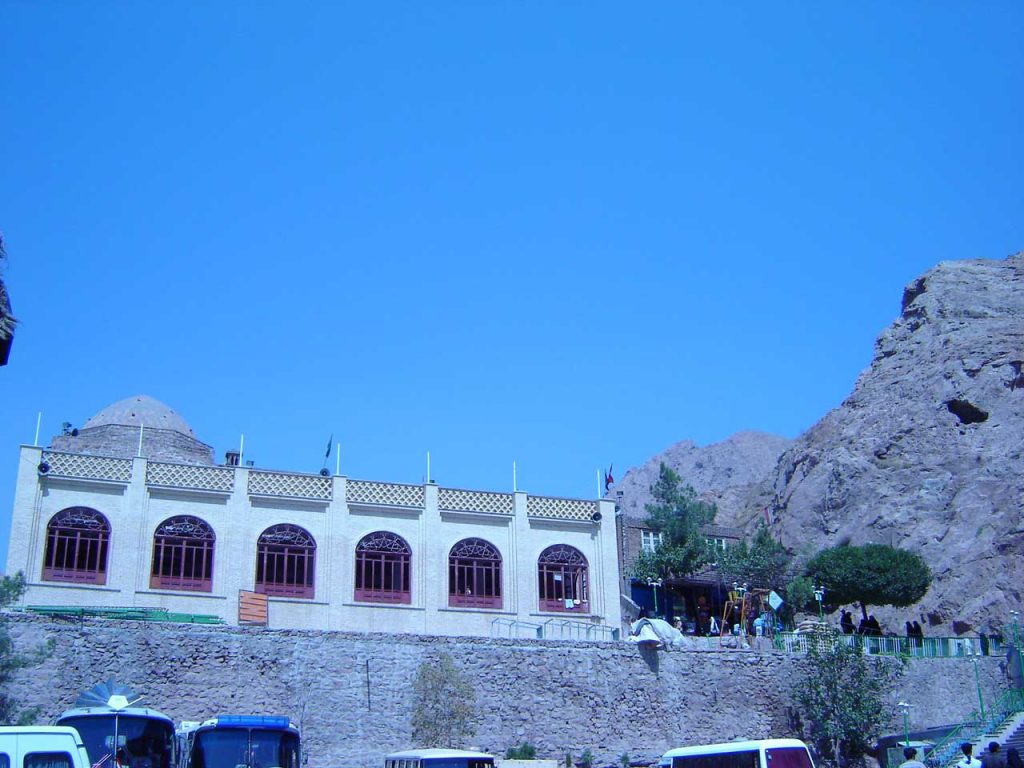
Shahrbanu’s death is as controversial as her origins. Some scholars claim that Shahrbanu died at childbirth and was therefore not present at the legendary Battle of Karbala, the historic late 7th century battle between Imam Hussein’s army and the Ummayyid dynasty, where Imam Hussein is said to have been martyred, turning Karbala in modern-day Iraq into a sacred site of pilgrimage for the world’s Shi’a masses. However, other scholars claim that during the Battle of Karbala, Imam Hussein sent Shahrbanu on horseback to escape the Ummayyid soldiers. She rides to Shahr-e Ray, a city close to Tehran, arriving at the foot of a mountain. Seeing the soldiers behind her, Shahrbanu prays for protection and the mountain opens up and devours her and her horse, tearing off a small piece of her clothes wedged in between the stone. Today, her shrine is located in Shahr-e Ray and she occupies a revered place in Iranian Shi’a history. Indeed, many claim that this legend is directly inspired from the story of Hayatbanu, as the parallels between the Zoroastrian Hayatbanu and the Muslim Shahrbanu are eerily prominent.

To even further complicate the connection between the Matriarch of Muslim Persia and pre-Islamic Iran, some scholars point out that the shrine of Shahrbanu is in fact constructed upon the remnants of the Temple of Anahita (who held the title Banu meaning “The Lady”), the ancient Iranian goddess of water, fertility, and healing. For example, Babayan, draws a connection between Shahrbanu’s continual virginity – casting her as a pure and incorruptible figure – and Anahita’s significance in both ancient Iranian religions and in Zoroastrianism as the source of water, purity, and life. This association can easily be seen in modern-day Iran where, according to Mohammad Ali Amir-Moezzi’s The Spirituality of Shi’i Islam: Belief and Practices, many Iranian women desiring children go on a pilgrimage to Shahrbanu’s shrine in order to be blessed with fertility. Thus, these stories of true Iranian-ness are quite literally built upon each other from antiquity into the present.
Reciting the history-mythology surrounding the figure of Shahrbanu and her role in the dissemination of Islam to Iranians is a significant method of (re)producing a seamless continuity between the lineage of the Prophet Muhammad and the line of the Twelve Imams (revered by Iranian Shi’a Muslims), and Iran’s pre-Islamic and Zoroastrian culture (lauded by both Muslim and non-Muslim patriots). In this sense, the validity of the historic objective “truth” of these stories, as can be gleaned from academic study, seems to be far less important than the cultural import that these stories convey to us about the nation’s sense of itself.
These stories offer insight into the fluid and symbiotic nature of various traditions within a nation (itself an ambiguous and constructed entity), reminding us that myths, legends and history of this nature primarily serve to solidify a sense of national ownership and belonging in the minds of a nation. It is undeniable that Zoroastrian and other ancient traditions, stories and customs have had an immense impact on the national imaginary of the Iranian people, as these stories are inextricably linked to Iranian Shi’ism, creating a unique and continuous sense of collective identity and shared heritage among Iran’s diverse population.












12 comments
An insidious attempt to apologize for islámic and arab imperialism that has violently persecuted native Iranian Zoroastrianism for over 1300 years. Iran is in fact a binary battlefield between pre-Islamic and Islamic and there can be no half-way house. Islam must yield, or Iranians become arab serfs. Authors like these unequivocally belong in the arab tent.
If you took half the time, effort, and years of scholarship required to write this kind of world-class research paper for a mass-audience, you wouldn’t be trolling the internet leaving your moronic hoofmarks.
Why are people in Iran so religious but Iranians in America are so godless and don’t care for religion at all?
Iranians know what has religion done to their beloved country. That’s why they don’t believe in it any more.
The first comment is true in the sense that Arab imperialism and forceful conversions almost destroyed Iran, but the truth is that even Zorostrians priests started abusing their powers and having sect wars during sassanid periods…also Iran has moved on so that binary view really doesn’t exist anymore.
Really informative – great appreciation from a total neophyte in all things Persian and Islamic. I can add this though: the early Christian Saint Thecla (a companion of the Apostle Paul) is also said to have been swallowed by a mountain, or at least a cave, to escape her pursuers. Now that I think about it in the Ramayana Rama’s wife Sita is also said to have had the earth swallow her when her faithfulness to Rama was falsely questioned – this may be a bit of a motif.